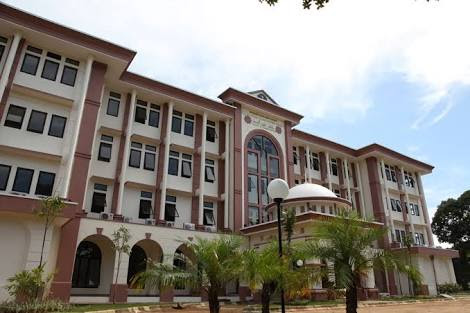ANALYSIS OF STUDENTS' ABILITY WITH CONCEPTUAL TEMPO LEARNING STYLE IN SOLVING SPATIAL PROBLEMS
ANALISIS KEMAMPUAN SISWA DENGAN GAYA BELAJAR TEMPO KONSEPTUAL DALAM MEMECAHKAN MASALAH SPASIAL
Abstract
This study aimed to describe students' spatial abilities in terms of cognitive conceptual tempo style. This type of descriptive qualitative research was conducted at SMP Negeri 26 Makassar with class VIII-2 research subjects. The instruments used in this study were: the MFFT (Matching Familiar Figures Test), spatial ability tests, and interview guidelines. The MFFT test (Matching Familiar Figures Test) was carried out to determine the type of student's cognitive style. Then found 1 subject of impulsive cognitive style and 1 subject of reflective cognitive style. Then the subject was given a spatial ability test to determine the students' spatial abilities after which an interview was conducted. Indicators of spatial ability are: (1) stating the position of the elements of a spatial figure. (2) Constructing and presenting geometric models drawn on a flat plane in a spatial context. (3) imagining the shape or position of a geometric object being viewed from a certain point of view. (4) Investigating the actual size of the visual stimulus of a geometric object. The results showed that students with an impulsive cognitive style had low spatial abilities because they were only able to fulfill 1 spatial ability indicator, namely constructing and presenting geometric models drawn on a flat plane in a spatial context. Meanwhile, students with a cognitive reflective style have high spatial abilities because they are able to fulfill all indicators of spatial abilities.
Downloads
References
Aini, R. N., Murtianto, Y. H., & Prasetyowati, D. (2019). Profil kemampuan spasial ditinjau dari gaya kognitif reflektif pada siswa kelas VIII SMP. Imajiner: Jurnal Matematika Dan Pendidikan Matematika, 1(5), 90–96. https://doi.org/10.26877/imajiner.v1i5.4455.
Alimuddin, H., & Trisnowali, A. (2018). Profil kemampuan spasial dalam menyelesaikan masalah geometri siswa yang memiliki kecerdasan logis matematis tinggi ditinjau dari perbedaan gender. HISTOGRAM: Jurnal Pendidikan Matematika, 2(2), 23–35. https://dx.doi.org/10.31100/histogram.
Appalumbang, D. O., & Tamba, K. P. (2018). Kemampuan pemecahan masalah siswa bergaya kognitif impulsif berdasarkan taksonomi solo. Journal Of Honai Math, 1(1), 47–55. https://doi.org/10.30862/jhm.v4i2.176KEMAMPUAN.
Ardian, A., & Munadi, S. (2015). Pengaruh Strategi pembelajaran student-centered learning dan kemampuan spasial terhadap kreativitas mahasiswa. Jurnal Pendidikan Teknologi Dan Kejuruan, 22(4), 454–466. https://doi.org/10.21831/JPTK.V22I4.7843.
Arifin, Yusmin, E., & Hamdani. (2017). Analisis kesulitan belajar siswa pada materi bangun ruang sisi lengkung di SMP. Khatulistiwa : Jurnal Pendidikan Dan Pembelajaran (JPP), 6(4), 1–13. https://dx.doi.org/10.26418/jppk.v6i4.19848.
Bety, S., & Rachmaniah, M. H. (2020). Analisis pemahaman matematis siswa ditinjau dari gaya kognitif reflektif-impulsif. Emasains : Jurnal Edukasi Matematika Dan Sains, 9(1), 9–16. https://doi.org/10.5281/ZENODO.3742831.
Diana, R. F., & Nurmawanti, I. (2020). Gaya kognitif konseptual tempo dan hasil belajar : suatu studi pada mahasiswa teknik. Jurnal Kajian Pendidikan Matematika : Universitas Mataram, 5(2), 289–298. https://dx.doi.org/10.30998/jkpm.v5i2.6406.
Fajri, H. N., Johar, R., & Ikhsan, M. (2017). Peningkatan kemampuan spasial dan self-efficacy siswa melalui model discovery learning berbasis multimedia. Beta Jurnal Tadris Matematika, 9(2), 180. https://doi.org/10.20414/betajtm.v9i2.14.
Geni, P. R. L., & Hidayah, I. (2017). Kemampuan pemecahan masalah siswa pada pembelajaran problem based learning bernuansa etnomatematika ditinjau dari gaya kognitif. Unnes : Mathematics Education, 6(1), 11–17. Retrieved from https://journal.unnes.ac.id/sju/index.php/ujmer/article/view/17232.
Hanafiah, U. (2019). Kemampuan Spasial Siswa MTS Ditinjau dari perbedaan gaya kognitif. Lintang Songo : Jurnal Pendidikan, 2(1), 54–60. Retrieved from https://journal.unusida.ac.id/index.php/jls/article/view/258.
Harmony, J., & Theis, R. (2012). Pengaruh kemampuan spasial terhadap hasil belajar matematika siswa kelas VII SMP negeri 9 Kota Jambi. Edumatica : Jurnal Pendidikan Matematika. https://doi.org/10.22437/EDUMATICA.V2I01.598.
Istiani, A., & Hidayatulloh. (2017). Analisis kesalahan siswa dalam menyelesaikan soal pada materi bangun ruang sisi datar. Prosiding Seminar Nasional Matematika Dan Pendidikan Matematika, 1(1), 129–135. Retrieved from https://proceedings.radenintan.ac.id/index.php/pspm/article/view/30.
Kusumawardani, H. D., & Budiarto, M. T. (2021). Representasi matematis peserta didik dalam menyelesaikan masalah matematika ditinjau dari gaya kognitif impulsive-reflective. MATHEdunesa, 10(3). https://doi.org/10.26740/mathedunesa.v8n2.p110-116.
Purborini, S. D., & Hastari, R. C. (2019). Analisis kemampuan spasial pada bangun ruang sisi datar ditinjau dari perbedaan gender. Jurnal Derivat: Jurnal Matematika Dan Pendidikan Matematika, 5(1), 49–58. https://doi.org/10.31316/j.derivat.v5i1.147.
Putra, G. V. H. P., Maya, R., Purwasih, R., Fitriani, N., & Nurfauziah, P. (2022). Analisis kesalahan siswa sma dan smk pada materi bangun ruang sisi datar berdasarkan kemampuan spasial siswa. JPMI : Jurnal Pembelajaran Matematika Inovatif, 5(6), 1787–1796. https://doi.org/10.22460/jpmi.v5i6.1787-1796.
Setiawan, W. (2016). Profil berpikir metaforis (metaphorical thinking) siswa SMP dalam memecahkan masalah pengukuran ditinjau dari gaya kognitif. Kreano, Jurnal Matematika Kreatif-Inovatif, 7(2), 208–216. https://doi.org/10.15294/kreano.v7i2.7127.
Satriani, S., Uddin, W., Halim, N. H., & Syamsuadi, A. (2020). The analysis of compliance type student's error in resolving integral challenge of trigonometry function. International Journal of Mathematics Trends and Technology, 66(10), 14–19. https://doi.org/10.14445/22315373/ijmtt-v66i10p503.
Wijaya, A. P. (2016). Gaya kognitif field dependent dan tingkat pemahaman konsep matematis antara pembelajaran langsung dan STAD. Jurnal Derivat : Jurnal Matematika Dan Pendidikan Matematika, 3(2), 1–16. https://doi.org/10.31316/J.DERIVAT.V3I2.713.
Wulansari, A. N., & Adirakasiwi, A. G. (2019). Analisis kemampuan spasial matematis siswa dalam menyelesaikan masalah matematika. Prosiding Sesiomadika : Universitas Singaperbangsa Karawang, 2(18), 504–513. Retrieved from https://journal.unsika.ac.id/index.php/sesiomadika/article/view/2802.
Copyright (c) 2023 Sri Satriani, Umy Kalsum, Awi Dassa, Andi Alim Syahri

This work is licensed under a Creative Commons Attribution 4.0 International License.

